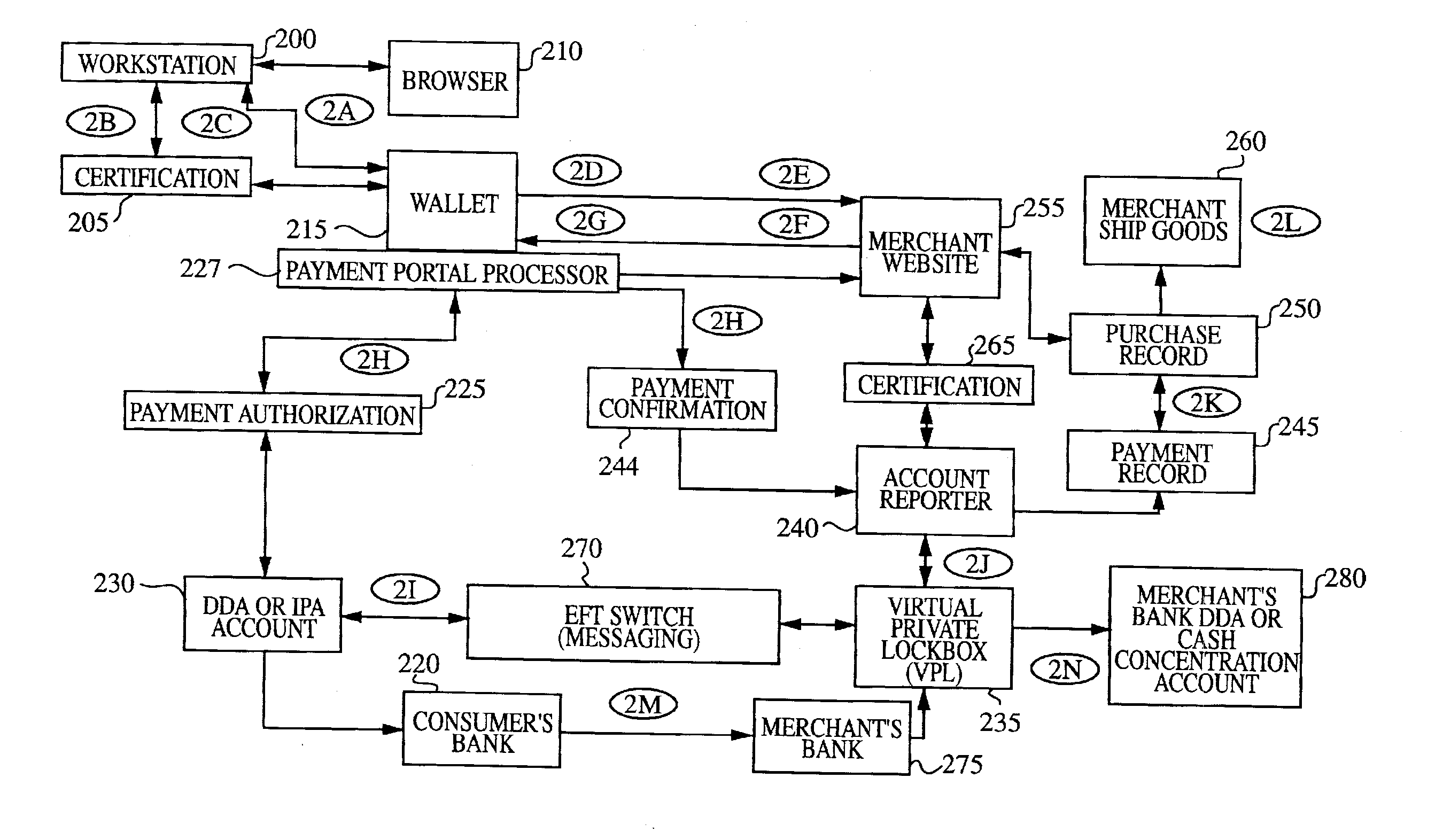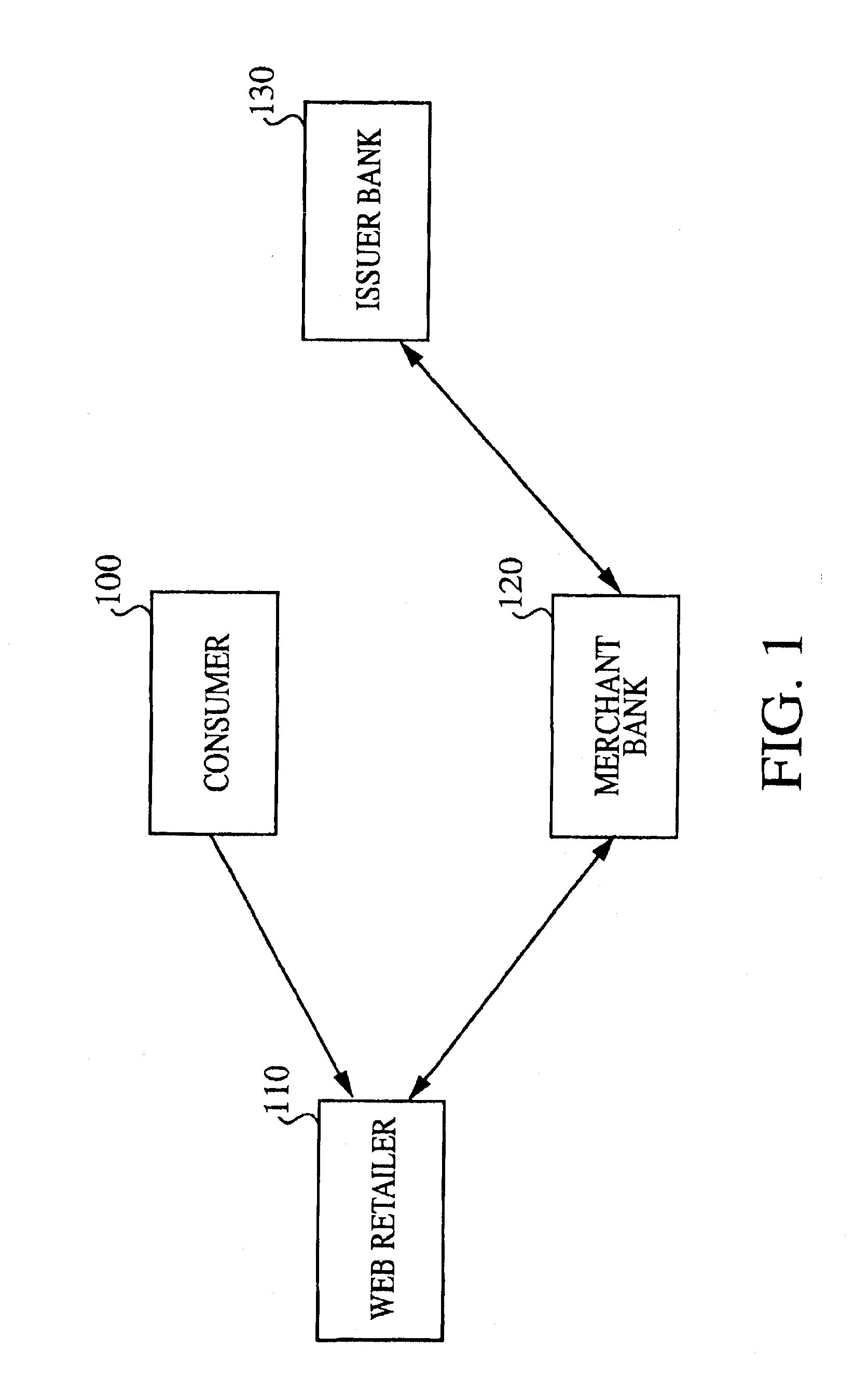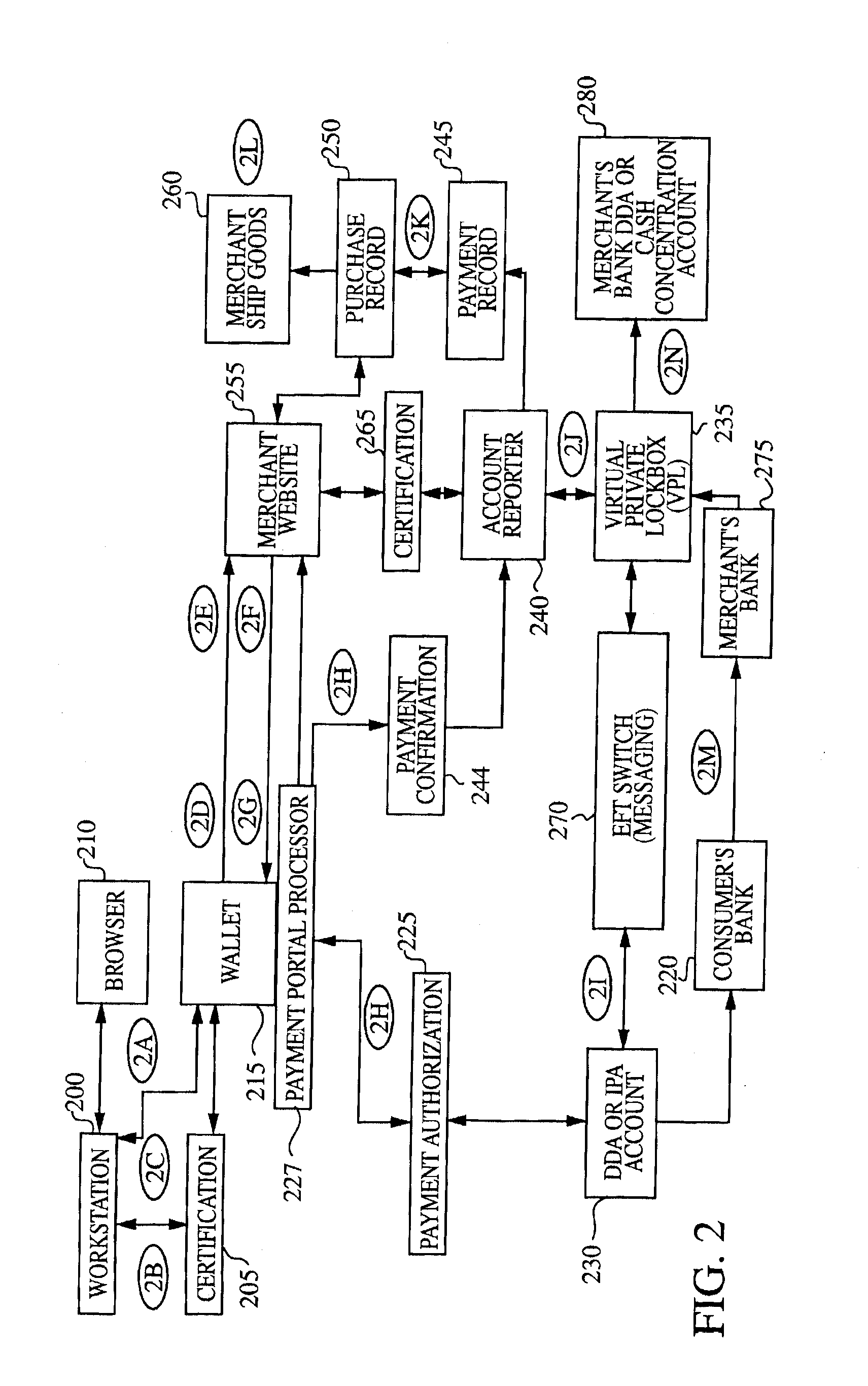Method and system for processing internet payments using the electronic funds transfer network
a technology of electronic funds transfer and internet payments, applied in the field of electronic commerce systems and methods, can solve the problems of inability to reverse or repudiate transactions, no emerging effort has gotten more than a toehold, and high volume, so as to reduce transaction costs, eliminate dispute and chargeback processing, and reduce fraud.
- Summary
- Abstract
- Description
- Claims
- Application Information
AI Technical Summary
Benefits of technology
Problems solved by technology
Method used
Image
Examples
first embodiment
[0046]FIG. 2 illustrates the present invention in which a consumer (including businesses acting as consumers) can perform Internet shopping. FIG. 2 further illustrates the main structural components of the present invention. Element 200 represents the device through which the consumer accesses the Internet. In a preferred embodiment, the workstation 200 is a Personal Computer (PC) loaded with an Internet browser 210 such as Netscape™ Navigator™ or Microsoft™ Internet Explorer™. In alternative embodiments, the user can access the Internet using any Internet ready device such as a web enabled ATM machine or a Personal Digital Assistant (PDA) such as a Palm Pilot™, a cell phone or an interactive TV. The present invention is not limited by any particular physical device and can employ any device that provides access to the Internet. For example a public kiosk which provides access to the Internet can be used to practice the present invention.
[0047]As the user accesses the Internet using...
second embodiment
[0090]FIG. 3 illustrates the present invention in which the structures described above can be used by a user to pay anyone. The PPP 227 of the present invention provides the user with tremendous flexibility. Anyone with using a PPP 227 can conveniently send funds to anyone else with an IPA / VPL account. This funds transfer is instantaneous and at no cost to the consumer, and is conducted in a secure environment.
[0091]As described above with respect to the Internet shopping model illustrated in FIG. 2, in the pay anyone model of FIG. 3, in steps 3A-3C, the user logs onto the Internet, launches its browser (not shown in FIG. 3) and launches the Wallet 215. In the embodiment of FIG. 3, the Wallet 215 is a traditional Wallet with the appropriate interface to the PPP 227. When the user wants to activate the PPP 227, the user is required to key in its user ID and password, by which the user is then authenticated and has access to their the accounts 230 associated with the PPP 227. The user...
PUM
 Login to View More
Login to View More Abstract
Description
Claims
Application Information
 Login to View More
Login to View More - R&D
- Intellectual Property
- Life Sciences
- Materials
- Tech Scout
- Unparalleled Data Quality
- Higher Quality Content
- 60% Fewer Hallucinations
Browse by: Latest US Patents, China's latest patents, Technical Efficacy Thesaurus, Application Domain, Technology Topic, Popular Technical Reports.
© 2025 PatSnap. All rights reserved.Legal|Privacy policy|Modern Slavery Act Transparency Statement|Sitemap|About US| Contact US: help@patsnap.com



